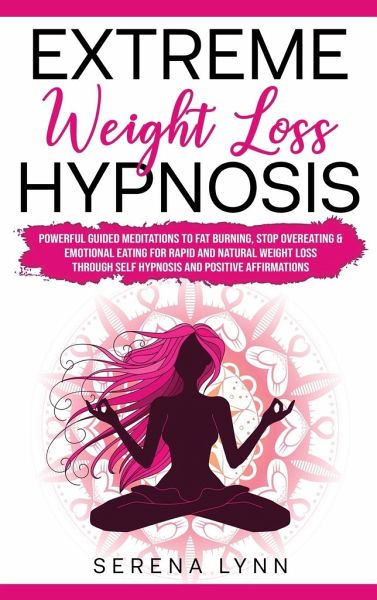
There are many styles of meditation. Walking meditation is the most well-known. You can slow down your walking pace and focus on your foot and leg movements, repeating action words as you go. Lift each foot up and place it on a flat surface. Another form of meditation that is popular is prayer. Prayer can be either written or spoken in many faith traditions. You can use this technique anywhere and anytime. You can also visualise a scene or focus on a specific person.
A mindfulness meditation app can help with this. Basically, it will tell you a calming word or phrase that will help you achieve peace and calm. It will keep your mind from wandering if you focus on these simple details. This can be done while you are doing other things, such as laundry or walking. It doesn't have be difficult, and you can begin right away. It is a great way for peace and tranquility.

The next step in this meditation exercise is to concentrate on deeply breathing. This will help you feel more relaxed than ever before. The key is to stay present and mindful during this time. Recognize your mind's wanderings and don't let it distract you from the present moment. It is easier to stay calm and focused by focusing on your breathing. To help you concentrate on your meditation, you can use guided meditation.
Meditation for calm is a great way to relax. If time is tight, you could try one-minute sessions. If you are more experienced, you can try a 15- to 20-minute session. If you don't have time for a longer session, you can download the track to listen to whenever you want. You can also download the tracks to listen later at a time and place that suits you.
There are many meditations that you can use to help you calm down. It can help you improve your mood and reduce anxiety. It can even help you improve your sleep. You can also improve your self-esteem. You'll have a better understanding of yourself and others. It will help you cope with any stress you are experiencing and achieve greater clarity and calm. It will make you feel happier. You will feel happier, calmer, and have more energy if meditation is something you do every day.

The best meditation for calm is the one that you like. Yoga is a great choice for improving your focus and calm. You should find a meditation that suits your needs. The type of meditation that is right for you will depend on your personality. You must find the one that works best for you. Mindfulness tools are also available. These tools can help you to keep track of how long you meditate.
FAQ
Exercise: Is it good or bad for immunity?
Exercise is good exercise for your immune system. When you exercise, your body produces white blood cells which fight off infections. Your body also gets rid of toxins. Exercise can prevent diseases such as cancer and heart disease. Exercise can help reduce stress.
However, exercising too much can weaken your immune system. Exercising too hard can make your muscles sore. This causes inflammation, swelling, and can even lead to death. Your body then has to produce more antibodies to fight off infection. Problem is, extra antibodies can trigger allergies and other autoimmune conditions.
So, don't overdo it!
Why should we have a healthy lifestyle to begin with?
A healthy lifestyle will help us live longer and happier lives. Healthy eating habits, regular exercise, healthy sleep habits, stress management, and good sleep habits can help to prevent heart disease, stroke, diabetes, cancer, and other serious diseases.
A healthy lifestyle will improve our mental well-being and help us deal better with everyday stressors. A healthy lifestyle can also help you feel and look younger.
What's the best diet?
Your age, gender, body type, and lifestyle choices will all impact the best diet. You also need to consider how much energy you expend during exercise, whether you prefer low-calorie foods, and if you enjoy eating fruits and vegetables.
If you are trying to lose weight, then you may want to try intermittent fasting. Intermittent fasting is a way to eat only certain meals during the day instead of three large meals. This might be better for you than traditional diets, which have daily calorie counts.
Studies have shown that intermittent fasting can improve insulin sensitivity and decrease inflammation. This could lead to improved blood sugar levels, and a lower risk of developing diabetes. Research also shows that intermittent fasting may increase fat loss and improve overall physique.
What is the difference in a virus and bacteria?
A virus is a microscopic organism that cannot reproduce outside its host cell. A bacterium is an organism that splits itself in two. Viruses are small, around 20 nanometers in size. Bacteria are much larger, at 1 micron.
Viruses can be spread by contact with bodily fluids containing infected substances, such as saliva, urine and semen. Bacteria are usually spread through direct contact with contaminated objects or surfaces.
Viral infections can be transmitted through skin cuts, scrapes and bites. They may also enter through the nose, mouth, eyes, ears, vagina, rectum , or anus.
Bacteria can enter the body through wounds. They can also get into our bodies via food, water or soil.
Both bacteria and viruses cause illness. Viruses cannot multiply in their host cells. They can only infect living cells and cause illness.
Bacteria can grow in their hosts and cause disease. They can also invade other parts of your body. They can even invade other parts of the body, which is why antibiotics are necessary to eradicate them.
What is the difference between fat and sugar?
Fat is an energy source that comes directly from food. Sugar is a sweet, naturally occurring substance in fruits and vegetables. Both fats (and sugars) have the same calories. However, fats contain more than twice as many calories as sugars.
The body stores fats and they can lead to obesity. They cause cholesterol buildup which can lead to strokes and heart attacks.
Sugars are quickly absorbed into the body and provide instant fuel. This causes blood sugar levels to rise. High blood glucose levels can lead to type II diabetes.
Statistics
- In both adults and children, the intake of free sugars should be reduced to less than 10% of total energy intake. (who.int)
- nutrients.[17]X Research sourceWhole grains to try include: 100% whole wheat pasta and bread, brown rice, whole grain oats, farro, millet, quinoa, and barley. (wikihow.com)
- This article received 11 testimonials and 86% of readers who voted found it helpful, earning it our reader-approved status. (wikihow.com)
- WHO recommends consuming less than 5% of total energy intake for additional health benefits. (who.int)
External Links
How To
What does the "vitamins” word mean?
Vitamins are organic substances found naturally in food. Vitamins are essential for our bodies to absorb nutrients from the foods we eat. Vitamins cannot be produced by the body. They must be acquired from food.
There are two types if vitamins: water soluble, and fat soluble. Water-soluble vitamins dissolve readily in water. Some examples include vitamin C,B1 and B2 vitamins (thiamine), B2 and riboflavin, B3 and B6 vitamins (niacin), folic acids, biotin, pantothenic acids, and cholesterol. Fat-soluble vitamins are stored in the liver, fatty tissue and kidneys. Vitamin D, E, K and A are some examples.
Vitamins can be classified by their biological activity. There are eight major types of vitamins:
-
A - vital for healthy growth.
-
C - vital for proper nerve function, and energy production.
-
D – Essential for healthy teeth, bones and joints
-
E is required for good vision and reproduction.
-
K – Required for healthy nerves & muscles.
-
P – vital for building strong bones.
-
Q – aids digestion of iron and iron absorption
-
R is required for the production of red blood cells.
The recommended daily allowance (RDA) of vitamins varies depending on age, gender, and physical condition. The U.S. Food and Drug Administration sets RDA values.
For adults aged 19 and older, the RDA for vitamin B is 400 micrograms daily. For fetal development, pregnant women need 600 mg per day. Children ages 1-8 require 900 micrograms per day. Babies under one-year old require 700 mg per day. Between 9 and 12 years of age, however, this drops to 500 mg per day.
Children ages 1-18years who are obese need 800 micrograms per day while those who are overweight need 1000 micrograms per day and children who are underweight need 1200 micrograms per day to meet their nutritional needs.
Children between 4 and 8 years old with anemia will need 2200 micrograms daily of vitamin C.
Adults over 50 years of age need 2000 micrograms per day for general health. Breastfeeding or pregnant women require 3000 micrograms per daily due to higher nutrient demands.
Adults over 70 require 1500 micrograms each day, since they lose around 10% of their muscle mass every decade.
Women who are pregnant, nursing or breastfeeding need more than the RDA. Pregnant and breastfeeding women require 4000 micrograms each day during pregnancy and 2500 Micrograms each day after delivery. Breastfeeding mothers need to consume 5000 micrograms every day when breastmilk has been produced.